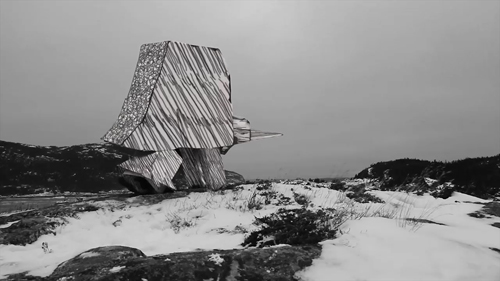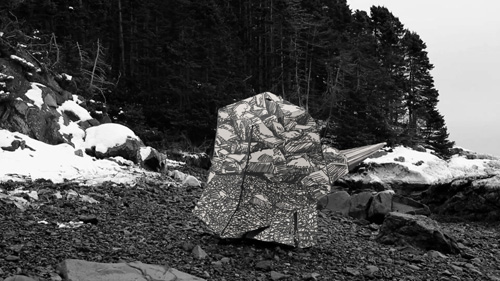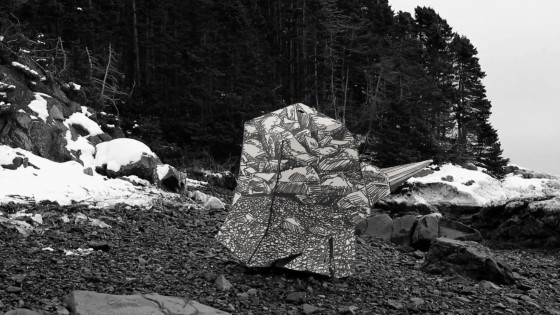Drop Ceiling
To retrofit a structure is to fold time and progress. A drop ceiling, as a whole, functions by simultaneously conforming to and concealing the inner layers of a building through a system of standardized parts. If damaged by water, smoke, or mold—these long tiles can be easily swapped out by new ones. The drop ceiling is just as it was. When working on a damaged boat, wooden ship-builders claim as long as they keep one plank of wood from the old form in the new, then by proxy it is still the same boat. This process of doubling forms serves as a conceptual framework for the exhibition Drop Ceiling, where questioning the role of subsequent translations of meaning is paramount. Rivkin and Zerangue’s collective works examine distance, in both measured time and imaginary space, between the literal and figurative parts of language, narrative, and cinema.
Zerangue’s works symbolically and metaphorically obscure the interrelationships between sources by appropriating letters and symbols, motor parts, and text. By selecting source material, like a 1976 Puch 2-stroke engine repair manual, that has passed through several layers of translation (linguistically, temporally, and spatially), the larger cultural and historical implications of distance between viewer and original meaning become entangled and confused.
Rivkin’s animation forms a dialogue between digital and analog cinema to reconcile methods of creating wonder. The limited color palette of Rivkin’s animation emphasises both the subtle collapsed space, or joins, between the separate layers of hand-drawn animation and the dramatic intensity of the surrounding landscapes. This is juxtaposed in the installation by the chroma-key suits for future animation performances. These suits reveal, through their form the potential for playful gestures and unique movement, a connection to the animator’s close partnership to dance and choreography.
Each work embodies its own individual sense of rhythm, structure, and time–as they also reflect a deeper contemplation on the role of analog technologies within an increasingly digital world. Through converting three dimensional sculpture to animation and embedding digital video into a flip book, Rivkin and Zerangue’s works invite viewers to reexamine their own drop ceiling of engagement to the world of mediated information, objects, and images.
Jacob Rivkin’s animation work has screened at the Animation Block Party in Brooklyn, NY, Vox Populi in Philadelphia, PA, and the Peephole Cinema in San Francisco. His sculptures have been exhibited at the Vancouver Art Gallery in Vancouver, BC, the Arlington Art Center in Arlington, VA and Julius Caesar Gallery in Chicago, IL. He is the recipient of a Fulbright Grant and the Weitzel Barber Travel Prize. He currently teaches animation and design courses at the University of Pennsylvania.
Joshua Zerangue’s animation work has screened at the Brooklyn Film Festival in Brooklyn, NY, Athens International Film Festival in Athens, OH, the Columbia Museum of Art, Columbia, SC, and at the Second Annual New Media Juried Exhibition, Asheville Art Museum, Asheville, NC. He currently teaches art and design courses at the University of Delaware and Drexel University.
 EXPANDED DIMENSIONS
EXPANDED DIMENSIONS

